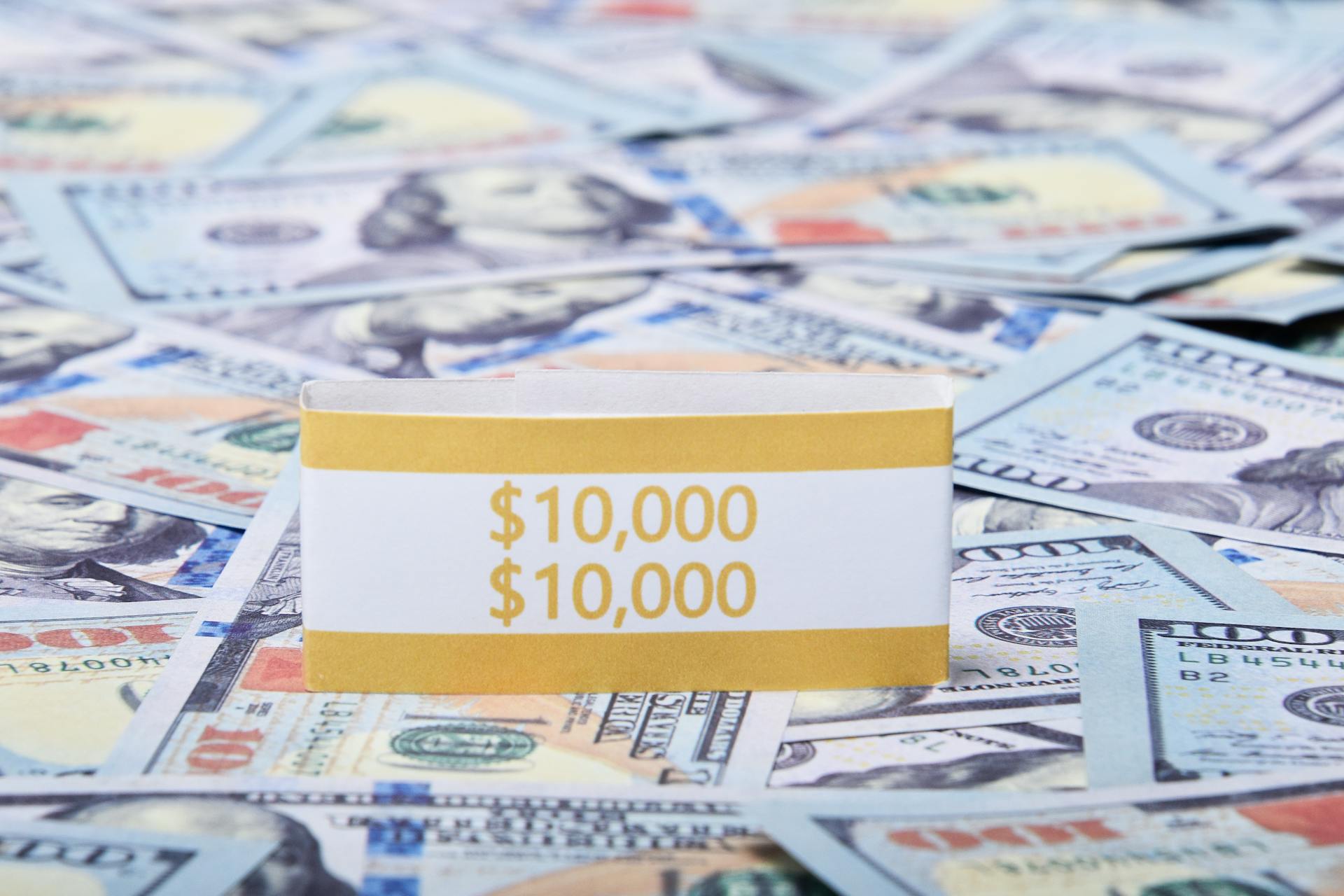
The US dollar is the official currency of the United States and is widely used as a global reserve currency. It's divided into 100 smaller units called cents.
One of the unique features of the US dollar is its symbol, $, which is used universally to represent the currency. This symbol is a key part of the dollar's identity and is recognized worldwide.
The US dollar has undergone several changes over the years, including the introduction of coins in 1792 and the establishment of the Federal Reserve System in 1913.
Curious to learn more? Check out: Usd Currency Symbol
What Is the US Dollar?
The US dollar is the official currency of the United States of America. It's represented by the symbol $ or US$ to differentiate it from other dollar-based currencies.
The U.S. dollar is made up of 100 cents, which is a pretty standard measurement that we're familiar with in everyday life.
It's considered a benchmark currency, meaning it's widely used and trusted in financial transactions around the world.
Readers also liked: Currency Exchange Us China
Understanding the US Dollar
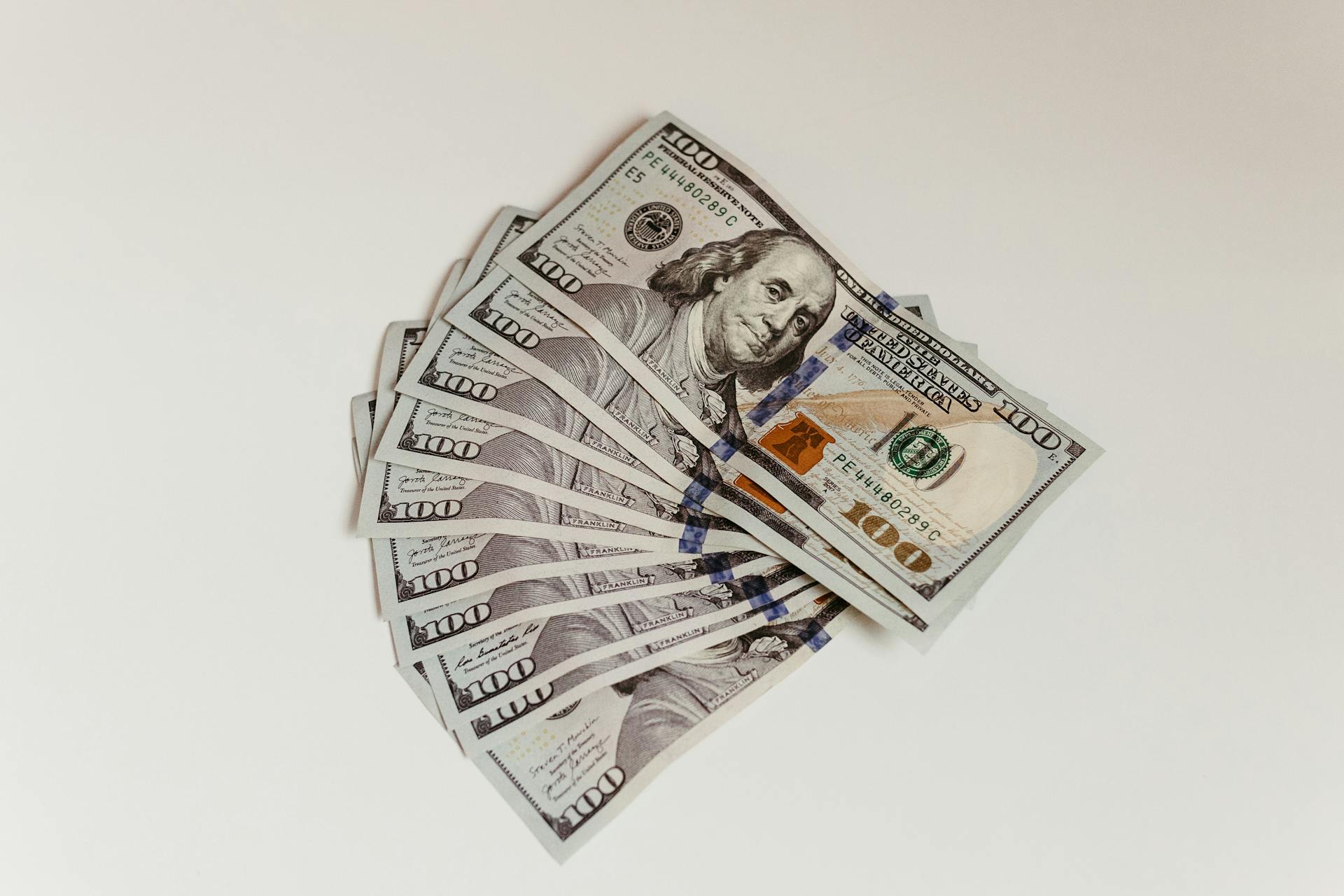
The US dollar, also known as the greenback, is a benchmark currency and the most used currency in transactions around the world. It's represented by the symbol $ or US$ to differentiate it from other dollar-based currencies.
The US dollar was created through the Coinage Act of 1792, which specified that a dollar of currency would be equal to between 371 and 416 grains of silver, and an "eagle" (US$10) at between 247 and 270 grains of gold.
Here are some of the most widely used US dollar coins: 1¢, 5¢, 10¢, 25¢, and rarely used: 50¢ and $1. The most commonly used US dollar bank notes are: $1, $5, $10, $20, $50, and $100, with $2 being rarely used.
The Federal Reserve Bank is the central bank that manages the US dollar. The US dollar is used as the official currency in the United States and many other territories, including American Samoa, American Virgin Islands, and Puerto Rico.
What Is The Interbank Rate?

The interbank rate is the exchange rate used by banks and large institutions when trading large volumes of foreign currency with one another. It's also known as the mid-market rate, spot rate, or real exchange rate.
This rate is not designed for individuals or smaller businesses, as they tend to attract a higher mark-up to make a profit. The interbank rate is typically lower than the rates offered to consumers, which is why it's essential to be aware of it.
The interbank rate can be found in exchange rate tables, like the one provided for USD exchange rates. For example, the interbank rate for exchanging USD to KRW is 1467.66 KRW per USD.
It's worth noting that banks and traditional providers often mark up the exchange rate, passing the extra costs to consumers. This is why it's crucial to shop around and compare rates to get the best deal.
Check this out: Exchange Rate Usd to Korean Won
Understanding the US Dollar
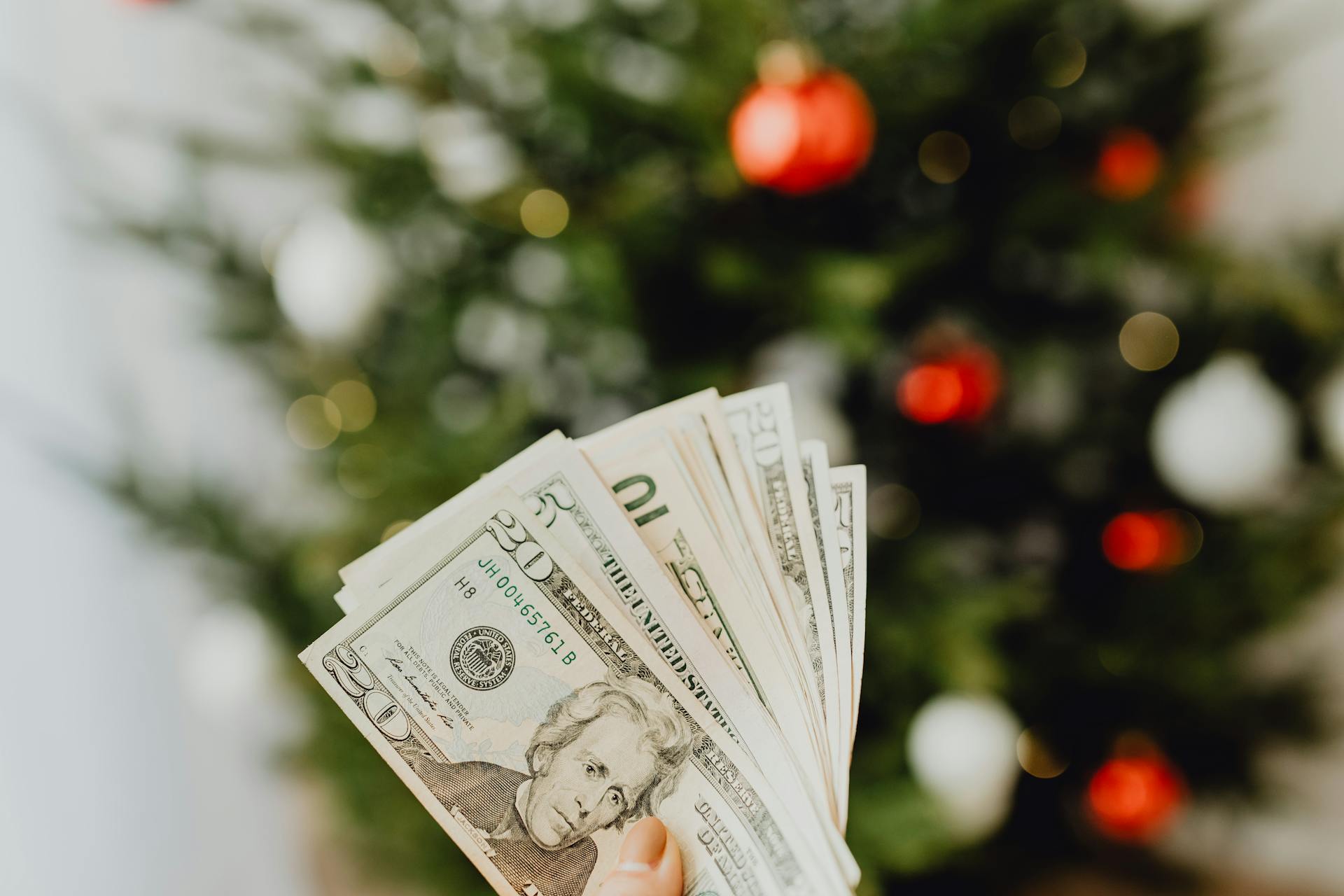
The US dollar is the official currency of the United States, represented by the symbol $ or US$ to differentiate it from other dollar-based currencies.
It's made up of 100 cents, making it a benchmark currency used in transactions around the world. The US dollar is also used as the official currency in many territories outside of the US, while many others use it alongside their own as an unofficial currency.
The US dollar was created through the Coinage Act of 1792, which specified that a dollar of currency would be equal to between 371 and 416 grains of silver, and an "eagle" (US$10) at between 247 and 270 grains of gold.
The first greenbacks were issued as demand notes to finance the 1861 Civil War against the Confederacy, and were referred to as "greenbacks" because they were green in color. Legal tender known as "United States Notes" was first issued in 1862.
The US dollar is divided into 100 cents, with coins and banknotes available in various denominations. Here are some common coins and banknotes:
The US dollar is used in the United States and several other countries, including American Samoa, American Virgin Islands, and Puerto Rico.
U.S. Banking
The U.S. banking system is a complex network of institutions that facilitate financial transactions for individuals, businesses, and governments.
The Federal Reserve, also known as the "Fed", plays a crucial role in U.S. banking by regulating the money supply and setting interest rates.
The Fed is composed of 12 regional Federal Reserve Banks, which are responsible for implementing monetary policy in their respective districts.
Commercial banks, such as JPMorgan Chase and Bank of America, are the backbone of the U.S. banking system, providing checking and savings accounts, loans, and other financial services to consumers.
In 2008, the U.S. government passed the Dodd-Frank Act, a sweeping reform aimed at preventing another financial crisis like the one in 2008.
Conversion and Exchange
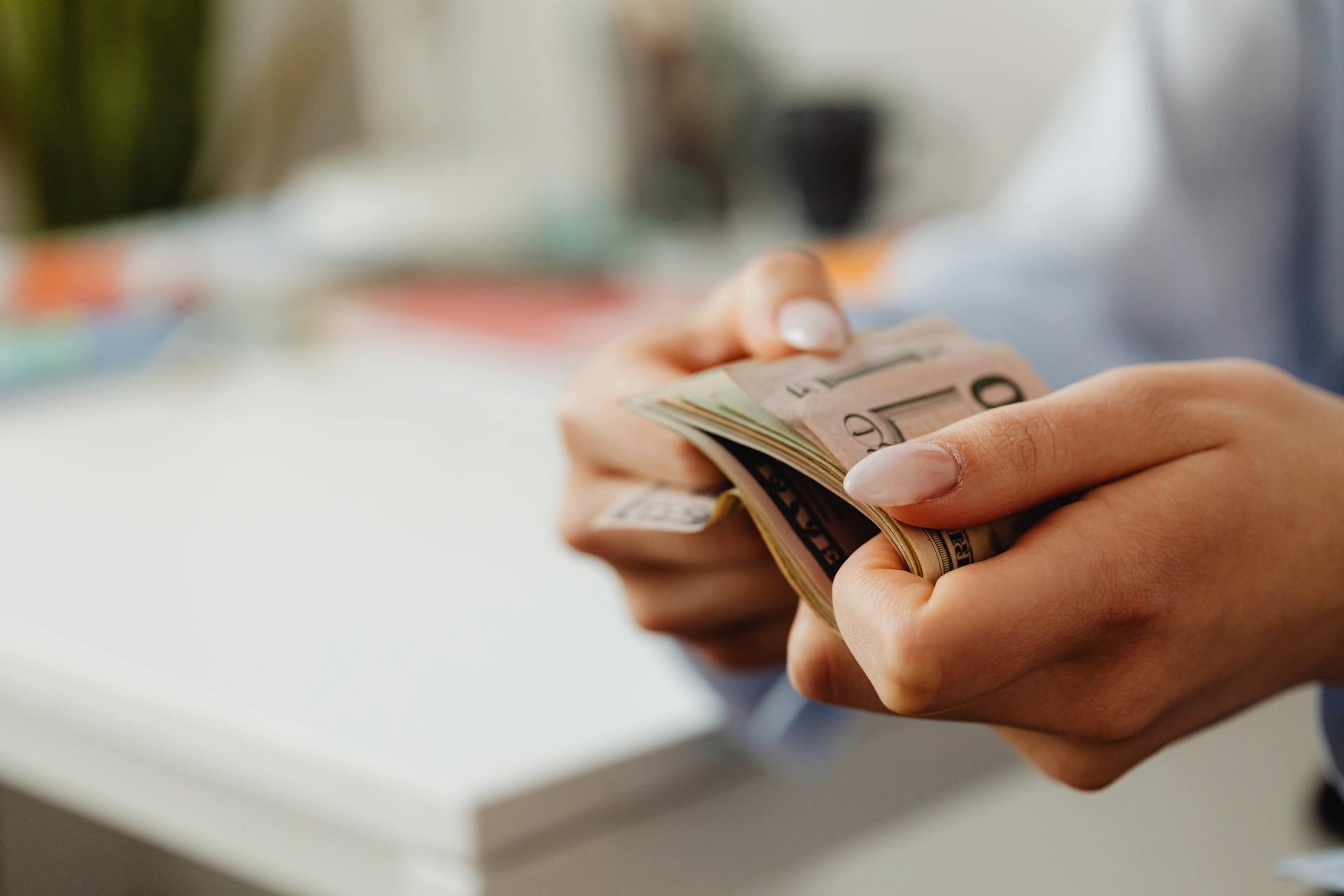
Using OANDA's Currency Converter is a great way to check the latest foreign exchange average bid/ask rates and convert all major world currencies.
You can access currency exchange rates dating back to January 1990, which is super helpful for historical research or tracking long-term trends.
To use OANDA's free currency converter, simply type into the relevant field currency names, 3-letter ISO currency symbols, or country names to select your currency.
You can convert world currencies, precious metals, or even obsolete currencies - the possibilities are endless!
OANDA's Currency Converter also allows you to convert currencies in both directions, from one currency to another and vice versa.
Here are some examples of USD exchange rates:
Beware of bad exchange rates - banks and traditional providers often have extra costs, which they pass to you by marking up the exchange rate.
A unique perspective: Best Currency Exchange for Usd
Key Concepts and Definitions
The USD currency plays a significant role in the world economy, with the bulk of global foreign-exchange trades involving it.

The USD is considered the world's most stable currency, which is a testament to its widespread use and acceptance.
The official currency of the United States of America, as well as many other territories and regions, is the USD.
The USD has a rich and varied history, making it one of the most interesting currencies to learn about.
Here are some key facts about the USD:
- The USD has its own index, the USDX.
- The USD is the most used currency in the world.
- The USD is the official currency of the United States of America.
What Does 'Stand' Mean?
"Stand" is a verb that means to be upright on one's feet, and it's commonly used in idiomatic expressions like "stand on one's own two feet" to mean being independent.
In the context of currency, "USD" stands for the U.S. dollar, which is the legal tender currency of the United States.
The word "stand" can also imply a sense of being firm or stable, like a strong foundation that doesn't waver, which is essential for financial stability in international trade and financial markets where the U.S. dollar is a global reserve currency.
Gold
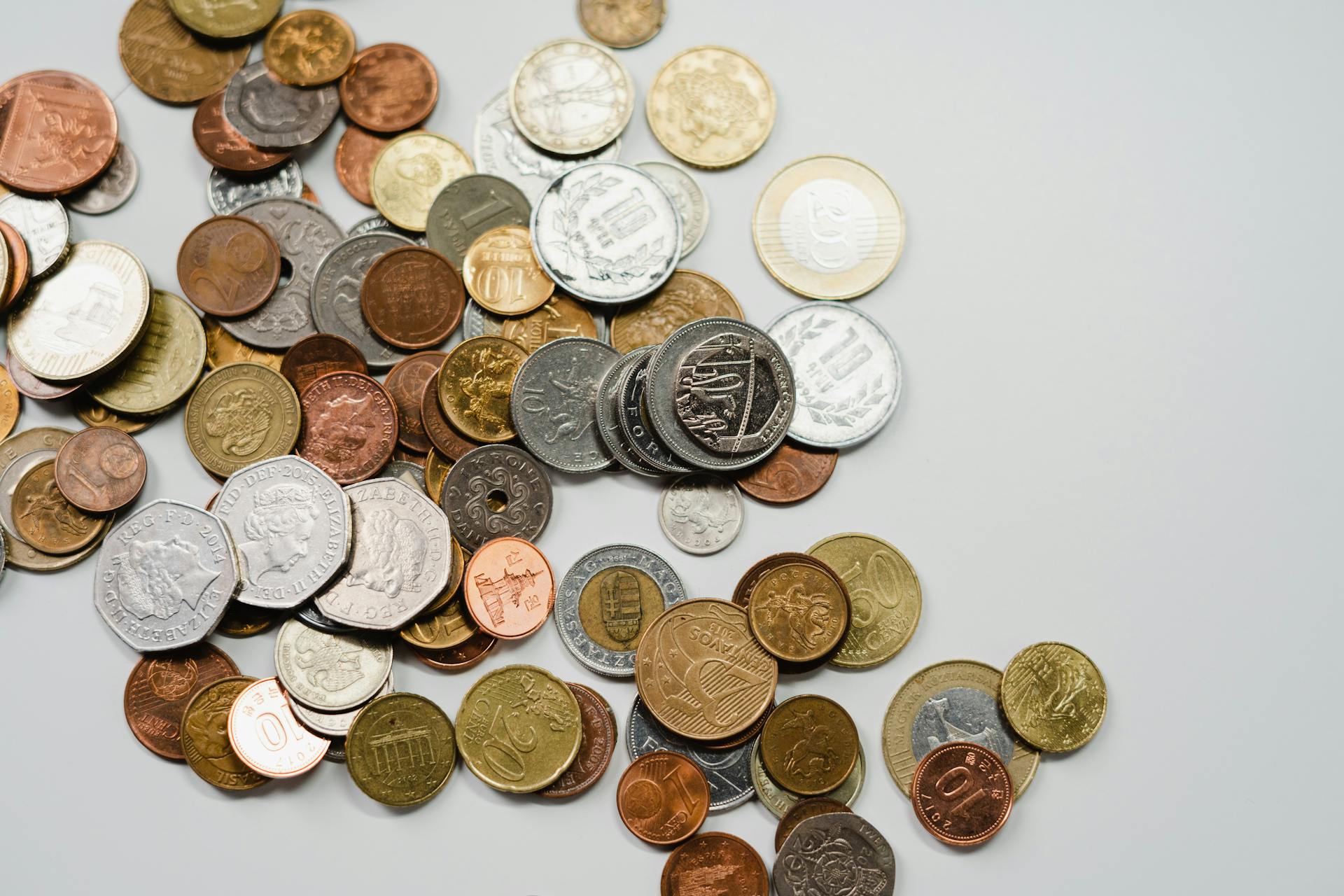
Gold has a complex history with the USD, starting with a price of $20.67 per troy ounce in 1933.
In 1934, the price of gold was allowed to rise to $35 per troy ounce, while the dollar was devalued in terms of its gold content.
The partial gold standard became difficult to maintain by the 1960s, leading to changes in the USD's relation to gold.
The requirement to hold gold reserves against Federal Reserve notes was repealed in 1968.
In 1971, the U.S. announced it would not freely convert dollars at the exchange rate with gold, marking a significant shift in their relationship.
The dollar was fully devalued against gold in 1972 and 1973.
The definition of the dollar in terms of gold was officially removed from statute in October 1976, ending any link between the two.
Frequently Asked Questions
Is USD going up or down?
The U.S. Dollar Index has fallen by -0.03% in the past 24 hours, indicating a slight decline. Check the U.S. Dollar Index chart for more up-to-date information.
What is USD currency called?
The USD currency is officially known as the United States dollar. It's also referred to as the dollar, U.S. dollar, American dollar, or colloquially as a "buck
Sources
Featured Images: pexels.com


